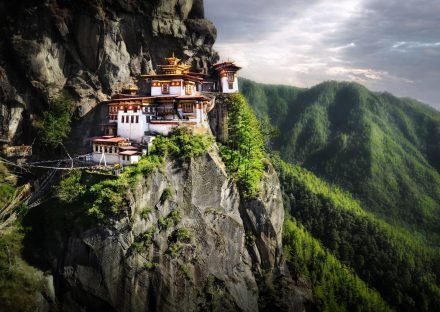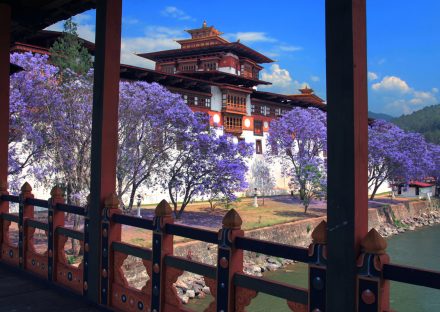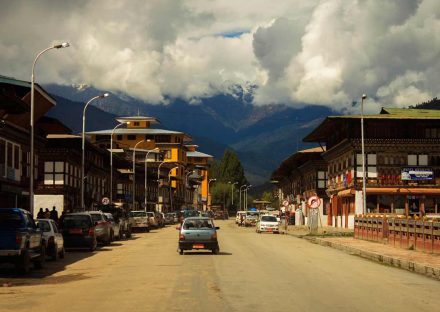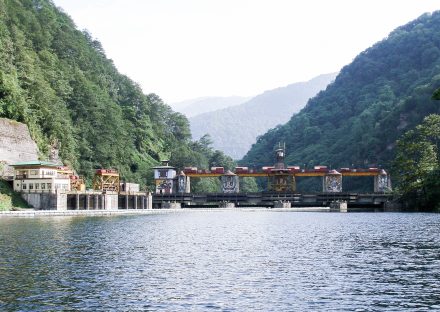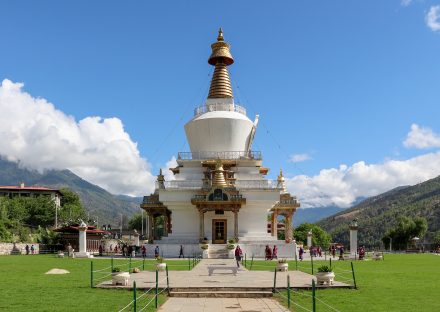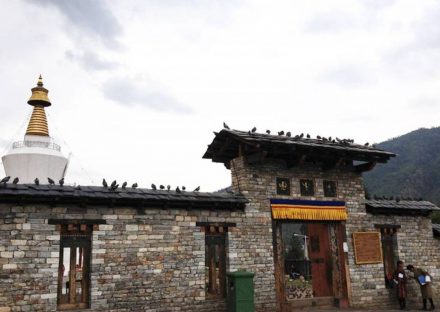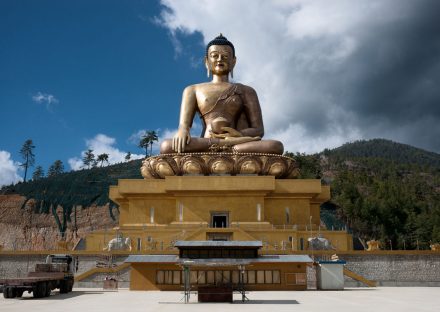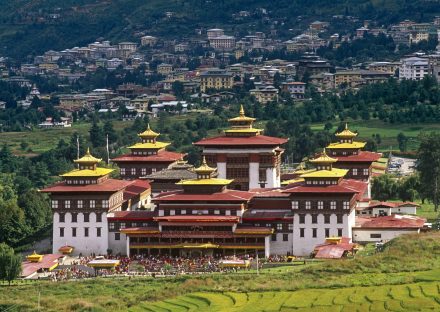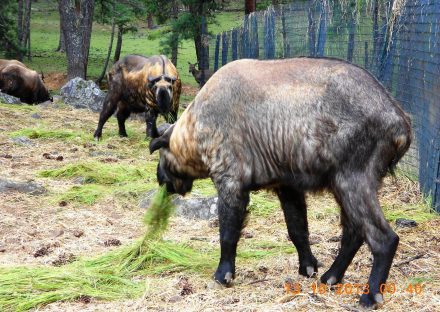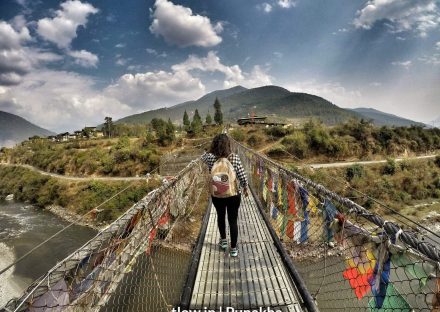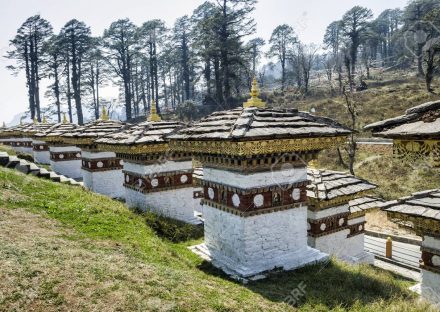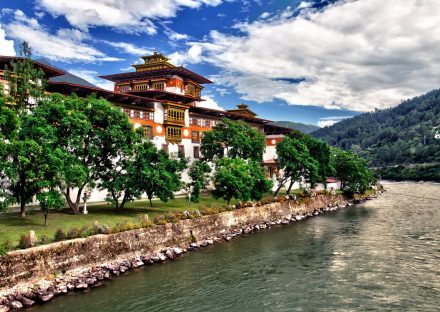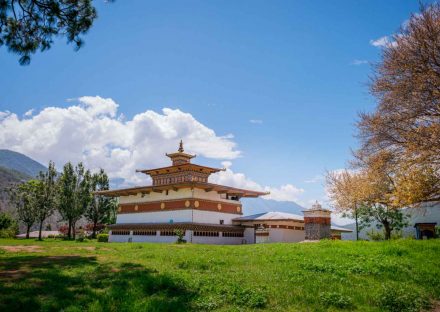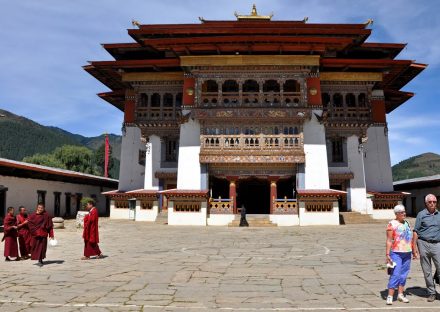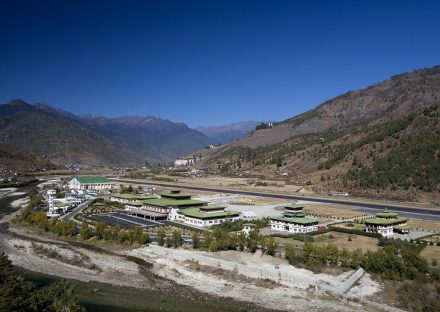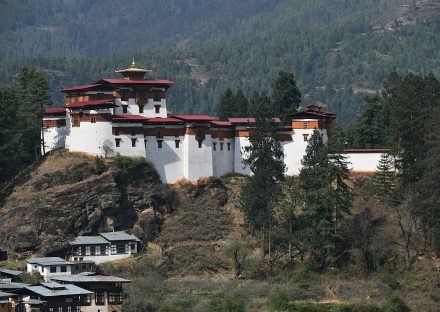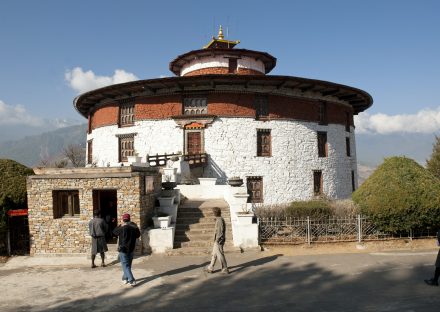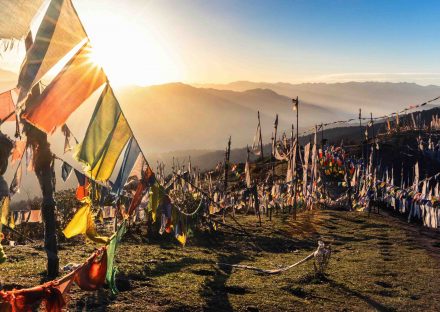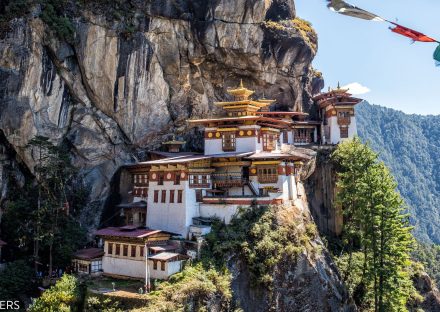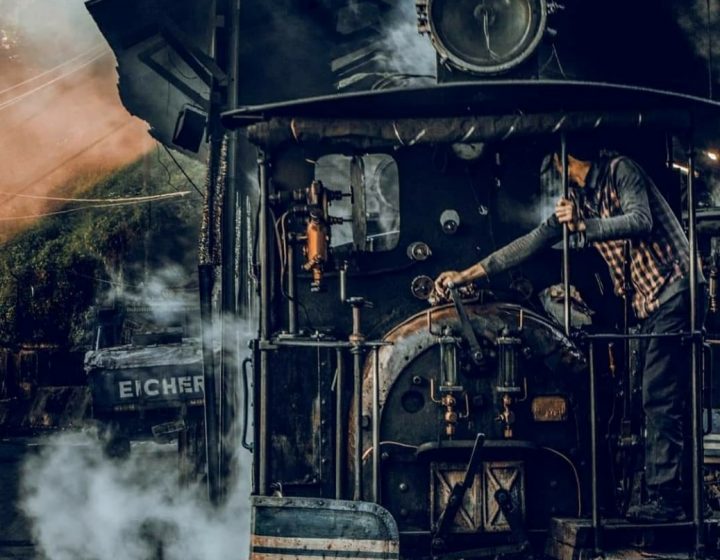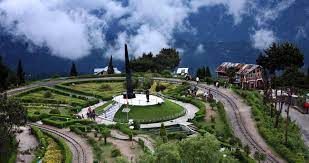Tour overview
2N PHUENTSHOLING 2N THIMPHU 2N PUNAKHA 2N PARO
Phuentsholing, Phuntsholing, also spelled as Phuentsholing, is a border town in southern Bhutan and is the administrative seat of Chukha District. The town occupies parts of both Phuentsholing Gewog and Sampheling Gewog.
Thimphu, Thimphu, Bhutan’s capital, occupies a valley in the country’s western interior. In addition to being the government seat, the city is known for its Buddhist sites. The massive Tashichho Dzong is a fortified monastery and government palace with gold-leaf roofs. The Memorial Chorten, a whitewashed structure with a gold spire, is a revered Buddhist shrine dedicated to Bhutan’s third king, Jigme Dorji Wangchuck.
Punakha, Punakha is a town in the Himalayas of Bhutan. It’s known for the Punakha Dzong, a 17th-century fortress at the juncture of the Pho and Mo Chhu rivers. The fortress hosts the Punakha Tshechu, a religious festival featuring masked dances and music. In the surrounding Punakha Valley, temples include the fertility-focused Chimi Lhakhang and the hilltop Khamsum Yulley Namgyal Chorten, which has river and mountain views.
Paro, Paro is a town and seat of Paro District, in the Paro Valley of Bhutan. It is a historic town with many sacred sites and historical buildings scattered throughout the area. It is also home to Paro Airport, Bhutan’s sole international airport.
Included
- All Toll Taxes, Parking fees and Driver's Expenses.
- Transportation mentioned in the itinerary.
- Hotel Booking, if required.
- Tour Manager.
Not Included
- Any Private Expenses.
- All other services not mentioned in the inclusions.
DAY 1: TRANSFER FROM BAGDOGRA AIRPORT TO PHUENTSHOLING
Meet and Greet at Bagdogra Airport and move towards Phuentsholing. The journey will take you through the winding roads and dense forest lands of West Bengal.
Reach Phuentsholing by the evening. Check into the hotel, explore the beautiful border town. Dinner and sleep overnight at the hotel.
Overnight stay at Phuentsholing.
DAY 02: TRANSFER TO THIMPHU FROM PHUENTSHOLING
After breakfast , complete the immigration formalities proceed towards Thimphu via the wonderful mystic town Gedu, which is about 9000 ft above the sea and Chukha Dam. On the way, halt at Chojun to take photographs of the confluence of two rivers of Bhutan, Thumpu Chu and Paro Chu. Reach Thimphu in the evening.
Places Include:
Chukha Dam: Chukha region is religiously significant as it has been blessed by many renowned Buddhist masters including the venerable Lama Drakpa Jamtsho in the 17th century. He established the Jabar Goemba Monastery at a site surrounded by five mountains with an auspicious resemblance to the five religious hats worn by lamas. The main relic of this monastery is a holy Phurba or ritual dagger that is said to have flown to the monastery from Tibet. Legend holds that the dagger continues to defy gravity to this day.
Overnight in Thimphu.
DAY 03 :THIMPHU FULL DAY EXCURSION
Wake up early and post breakfast depart for After breakfast, we go for a full day sightseeing tour of Thimphu, one of the smallest capital in the world.
Places Include:
National Memorial Chorten: The National Memorial Chorten was built in memory of Third Druk Gyalpo and is dedicated to World Peace. The chorten is a large white structure crowned with a golden spire.
It is located close to the center of Thimphu city and is one of its most iconic monuments. Visitors will find elderly Bhutanese people circumambulating the Chorten throughout the day. Chorten literally means ‘Seat of Faith’ and Buddhists often call such monuments, the ‘Mind of Buddha’. The Chorten is an extraordinary example of Buddhist architecture and artwork with its gorgeous paintings and intricate sculptures.
Folk Heritage Museum: Located in the capital city of Thimphu, this museum was established in 2001 and provides visitors and tourists with fascinating insights into the Bhutanese material culture and way of life. The Folk Heritage Museum is set inside a three storied, 19th century traditional house.
The museum gives you a glimpse of the traditional Bhutanese lifestyle, in addition to artifacts from rural households; it also displays an impressive collection of typical household objects, tools and equipment. The museum also organizes regular demonstrations of rural traditions, skills, habits and customs as well as hosting educational programs for children.
Buddha View Point: A place from where you can get a good overview of the Thimphu valley is from the Buddha point (Kuensel Phodrang). You can pay your obeisance and offer prayers to the Buddha, the largest statue in the country and then walk around and take a glimpse of the valley. Memorial Chorten, Also known as the Thimphu Chorten, The Memorial Chorten(a stupa dedicated to world peace and prosperity in 1974 in memory of the Third King of Bhutan).
Trashi Chhoe Dzong : Also called Fortress of the Glorious Religion it is situated on north of the city on west bank of the Wang Chhu. The Dzong was the site of the lavish formal coronation of the fifth King in 2008 and hosts the city's biggest annual bash, the colorful tsechu festivities. The opening times are 5-6 PM Mon-Fri, 8AM-6PM on Sat & Sun.
National Library: Housing an extensive collection of priceless Buddhist manuscripts; the Institute for Zorig Chusum (commonly known as the PaintingSchool) is where students undergo a 6-year training course in Bhutan's 13 traditional arts and crafts.
SAARC Building: Guests will also visit the Wonderful SSARC Building Simtokha Dzong, The monastery was built in 1627 by Zhabdrung Ngawang Namgyal. It houses the Institute for Language and Cultural Studies. The carvings behind the prayer wheel in the courtyard are a major attraction of this temple.
Textile Museum: Get to know the living national art of weaving at the TextileMuseum. Exhibitions introduce major weaving techniques, styles of local dress and textiles made by women and men.
Takin Mini Zoo: The Takin is the national animal of Bhutan, and looks like a cross between a cow and a goat. Legend has it that the animal was created by the great Buddhist yogi, Drukpa Kunley, and it can be found only in Bhutan. In the evening, return to your hotel and rest overnight after dinner.
Overnight stay at Thimpu.
DAY 04 : TRANSFER TO PUNAKHA FROM THIMPU & ON THE WAY SIGHTSEEING
After breakfast, start for Punakha . One the way , visit Dochula viewpoint stop: The first stop after leaving Thimphu on the journey is Dochu La pass around 3100 m high and way above the clouds. Only an hour's drive from Thimphu, it offers visitors their first glimpse of the Eastern Himalayan range.
Places Include:
Suspension Bridge :A long metal bridge over a mountain river, decorated with colorful Buddhist prayer flags.
Dochula view point: One can see himalyan range on a clear day. Highest point in this region.
Dochula Pass: The Dochula Pass is a mountain pass in the snow covered Himalayas within Bhutan on the road from Thimpu to Punakha where 108 memorial chortens or stupas known as "Druk Wangyal Chortens" have been built by Ashi Dorji Wangmo Wangchuk, the eldest Queen Mother.
Punakha Dzong: Punakha Dzong is also known by the name of Pungthang Dewa Chhenbi Phodrang which translates into ‘The Palace of Great Happiness’. This majestic building dates back to the 17th century and is the second largest and the second oldest Dzong in Bhutan.
Chimi Lhakhang: Chimi Lhakhang, also known as Chime Lhakhang or Monastery or temple, is a Buddhist monastery in Punakha District, Bhutan.
Overnight stay at Punakha.
DAY 05: PHOBJIKHA VALLEY EXCURSION FROM PUNAKHA
Have some breakfast. Descend towards the Valley of Black-Necked Cranes. Click some of the best pictures from the tour here. Travel to the Gangtey Monastery which is one of the oldest monasteries lying at an elevation of 3000m.
Drive back to Punakha across the scenic landscapes.
Places Include:
Gangteng Monastery: The Gangteng Monastery, generally known as Gangtey Gonpa or Gangtey Monastery, is an important monastery of Nyingma school of Buddhism, the main seat of the Pema Lingpa tradition. located in the Wangdue Phodrang District in central Bhutan.
Overnight stay at Punakha.
DAY 06: TRANSFER TO PARO FROM PUNAKHA AND SIGHTSEEING
Punakha - Paro After breakfast start for Paro , around 4 hrs drive . and have lunch in Paro . After Lunch start to go sightseeing in Paro. Drukgyel Ruin Dzong: Originally a fortress and Buddhist monastery, it is now in ruins and is located in the upper part of Paro valley.
Places Include:
Paro International Airport: is the sole international airport of the four airports in Bhutan. It is 6 km from Paro in a deep valley on the bank of the river Paro Chhu. With surrounding peaks as high as it is considered one of the world's most challenging airports, and fewer than two dozen pilots are certified to land at the airport
Drukgyal Dzong: Drukgyal Dzong was a fortress and Buddhist monastery, now in ruins, located in the upper part of the Paro District, Bhutan. The dzong was probably built by Tenzin Drukdra in 1649 at the behest of Ngawang Namgyal, Zhabdrung Rinpoche, to commemorate victory over an invasion from Tibet.
National Museum of Bhutan: National Museum of Bhutan is a cultural museum in the town of Paro in western Bhutan. Established in 1968, in the renovated ancient Ta-dzong building, above Rinpung Dzong under the command of His Majesty, the King Jigme Dorji Wangchuck, the third hereditary Monarch of Bhutan.
Overnight stay at Paro.
DAY 07: CHE-LE-LA PASS (HAA VALLEY) EXCURSION
Go on a day out to Chele La Pass(elevation 3988 meters). Sit on a rock and take in the breath-taking views of sacred mountain Jhomolhari and Jichu Drake. Connect with nature during the hour-long drive on the high pass that is surrounded by wild roses, purple and yellow primulas, deep blue iris and rhododendrons in a plethora of colors. Later we will leave for Phuentsholing for hotel check-in.
Places Include:
Chelela Pass: Chelela Pass is the highest motorable point in Bhutan, sitting 3988 metres above sea level, between the Haa and Paro valleys. The pass is located 35 km from Paro and 26 km from Haa on the Bounty-Hana Highway. Built in the 1990s, the asphalt road is narrow and steep, with sharp turns and sheer drops.
Overnight stay at Paro.
DAY 08: HIKE TO TAKTSANG TIGER NEST AND THEN TRANSFER TO PHUENTSHOLING
Wake up and post breakfast head for Paro local sightseeing. Taktsang Monastery (Tiger's Nest Temple) -The most famous of Bhutanese monasteries. It is said that Guru Rinpoche arrived here on the back of a tigress and meditated at this monastery hence it is called Tiger's Nest. Precariously perched on the edge of a 1,200 metre cliff, this monastery creates an impressive sight, and is the unofficial symbol of Bhutan. It is about a 2 hour up-hill hike or horse ride from the parking lot to the monastery. If the full hike sounds a bit tough you can hike for 1 hour to the cafeteria, a wooden tea-house restaurant which offers a good view of the monastery. After a visit to the monastery, spend the evening at leisure in Paro town for some souvenir shopping and get a feel of local Paro town.
Places Include:
Paro Taktsang or Tiger's Nest Temple: Paro Taktsang, is a prominent Himalayan Buddhist sacred site and the temple complex is located in the cliffside of the upper Paro valley in Bhutan.
Overnight stay at Phuentsholing.
DAY 9: TRANSFER TO BAGDOGRA AIRPORT FROM PHUENTSHOLING.
After early breakfast , leave for Bagdogra Airport with a sweet Bhutan Holiday memory and cherish your memories forever.

